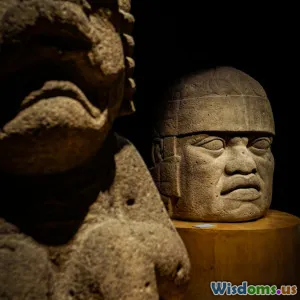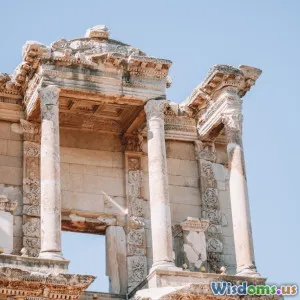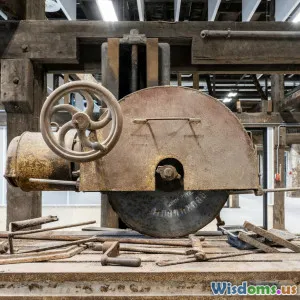
Exploring Ancient Trade Routes and Their Impact
6 min read Uncover the significance of ancient trade routes and their influence on civilizations. (0 Reviews)
Exploring Ancient Trade Routes and Their Impact
Trade has been a fundamental aspect of human civilization, serving as the backbone for cultural interaction and economic growth. In ancient times, trade routes facilitated not just the exchange of goods but also the mingling of ideas, beliefs, and practices among diverse societies. This article delves into the significance of these ancient trade routes and their lasting impact on civilizations.
The Origins of Trade Routes
The earliest trade routes can be traced back to the Mesopotamian civilizations around 3000 BCE. As agriculture developed, surplus goods necessitated trade, leading to the establishment of networks that connected various communities. The Silk Road, which emerged later, is one of the most famous trade routes, linking the East and West and enabling the exchange of silk, spices, and other valuable commodities.
Major Ancient Trade Routes
-
The Silk Road: Spanning over 4,000 miles, the Silk Road facilitated trade between China, the Middle East, and Europe. It was not just a route for goods but also a conduit for cultural exchange, including religion, technology, and art. Notably, the spread of Buddhism from India to East Asia was significantly aided by this trade network.
-
The Incense Route: Connecting the Arabian Peninsula with the Mediterranean, this route was crucial for the trade of frankincense and myrrh. It played a vital role in the prosperity of kingdoms like Nabatea and influenced the spread of religions across the regions it traversed.
-
The Roman Roads: The extensive network of roads developed by the Romans facilitated efficient trade throughout their empire. These roads not only promoted commerce but also aided military movements and the spread of Roman culture across Europe.
-
The Trans-Saharan Trade Routes: Connecting sub-Saharan Africa to North Africa, these routes were instrumental in the trade of gold, salt, and slaves. The wealth generated from this trade enriched cities like Timbuktu and made them cultural and educational centers.
The Impact on Civilizations
The establishment of trade routes had profound effects on the civilizations involved. Here are several key impacts:
Economic Growth
As trade routes opened up, economies flourished. Regions rich in resources could trade for goods they lacked, fostering interdependence. For example, the trade of spices from the East enriched European nations, leading to the Age of Exploration.
Cultural Exchange
Trade routes acted as highways of cultural exchange. Merchants, travelers, and missionaries spread ideas, art, and technologies. The cross-cultural interactions along the Silk Road contributed to the Renaissance in Europe, as ancient knowledge from the East became accessible.
Urban Development
Key trading hubs emerged along these routes, leading to urbanization. Cities like Constantinople, Baghdad, and Cairo became melting pots of cultures, drawing visitors from distant lands. This urban growth was essential for the development of complex societies and governance.
Influence on Art and Religion
Artistic styles and religious beliefs were exchanged along trade routes, influencing local cultures. For instance, Islamic art was significantly influenced by Persian, Indian, and Byzantine styles due to trade interactions. Similarly, the spread of major religions like Christianity and Islam was facilitated by trade, leading to profound societal transformations.
Archaeological Discoveries
Archaeologists continue to uncover evidence of these ancient trade routes, providing insights into the lives of people who traversed them. Artifacts such as coins, pottery, and textiles found along these routes reveal the extent of trade and cultural interaction.
Recent Findings
Recent discoveries along the Silk Road have included ancient caravanserais (roadside inns), which served as rest stops for traders. These findings highlight the infrastructure that supported trade and the lifestyles of those who participated in these exchanges. Moreover, the discovery of ancient ports along the Mediterranean has shed light on maritime trade routes, showcasing the global nature of ancient commerce.
Conclusion
Ancient trade routes were more than mere paths for commerce; they were conduits for cultural exchange and economic integration that shaped civilizations. The impact of these routes is still felt today, as they laid the groundwork for the interconnected world we experience now. By studying these ancient networks, we gain valuable insights into the complexities of human interaction and the foundations of modern trade and globalization.
Understanding the significance of ancient trade routes allows us to appreciate the rich tapestry of human history and the ways in which our ancestors influenced the world we inhabit today.
Rate the Post
User Reviews
Popular Posts



















